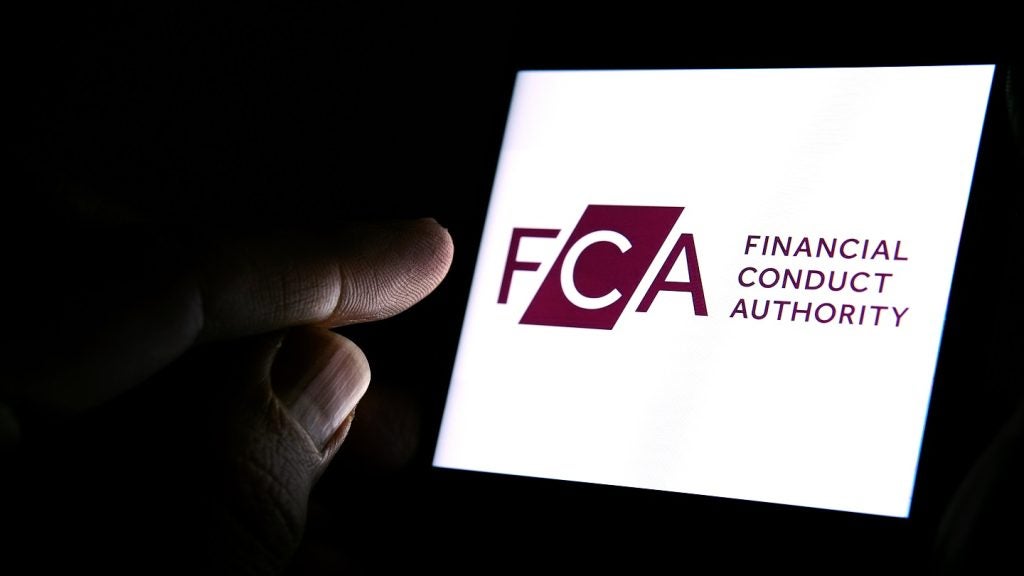Sadikin, managing director for micro and retail banking at
Indonesia’s largest financial services group, Bank Mandiri. He
tells her the bank has successfully reduced its NPL ratio from 15.3
percent in 2005 to 1.5 percent and is focusing on growing its
underweight consumer banking business.
In the cavernous, wood-panelled offices of Indonesia’s largest
bank, Bank Mandiri, Budi Sadikin stands out and it’s not just
because of his purple shirt and tie underneath the classic dark
banker’s suit. Clean-cut and energetic, the bank’s managing
director for micro and retail banking is also its youngest senior
executive at age 43. With a degree in nuclear science, Sadikin
represents the new breed of retail bankers who earned their spurs
at international institutions such as Citi, HSBC, ABN AMRO and
Standard Chartered.
 “This is basically a turnaround story. We had our NPL
“This is basically a turnaround story. We had our NPL
[non-performing loans] issues in 2005. The finance minister
replaced the whole board and the new management was tasked to build
Bank Mandiri as a representative of Indonesian banks in Asia,” he
said in an interview with RBI at his office in
Jakarta.
Bank Mandiri was formed from a merger of four banks that emerged
from the shadows of the 1997 Asian crisis. The bank – Mandiri means
“independent” in Bahasa Indonesian – was meant to be Indonesia’s
lead local bank and the country’s answer to Singapore’s DBS Bank
and Malaysia’s Maybank.
But by 2005, the bank had the highest NPL ratio among its peers.
Debt recovery was a slow and painful process hampered by the fact
that most of its debtors were state-owned enterprises and powerful
local conglomerates – the bank was facing an inquiry over $1.5
billion in NPLs to the country’s business and political elite. The
bank’s negative image was exacerbated when three of its senior
executives – including the chief executive officer – were charged
in a high-profile corruption case. Although the court has acquitted
them, many still bayed for their blood.
Netherlands-born Agus Martowardojo was brought in mid-2005 as CEO
to revamp the bank. One of the more drastic and high profile
measures he took then was to announce the names of debtors who were
in arrears in their loan repayments. He also brought in a strong
management team to lead each of the bank’s newly created five
sub-divisions on the back of his strategy to create a “dominant
multi-specialist bank”.
Since then, Mandiri has undergone an impressive rebuilding
exercise. It was ranked second among local financial institutions
and third among all local corporations in a locally-compiled 2006
Corporate Governance Index. The bank recently reported an increase
in its net profit of 80 percent year-on-year driven by loan growth,
higher fee income and increased net margin.

US Tariffs are shifting - will you react or anticipate?
Don’t let policy changes catch you off guard. Stay proactive with real-time data and expert analysis.
By GlobalDataAccording to Sadikin: “We have since successfully reduced our
non-performing loans from 15.3 percent in 2005 to 1.5 percent as of
end-2007. It has been difficult to restructure loans because, as a
government bank, we can’t give a discount on the principal. In
addition, Indonesian debt recovery laws are not yet as clear as in
other countries. We did announce those with the largest defaults in
public. It was brutally effective yet unpopular – we were given top
marks for corporate governance though… In terms of profit, we
have grown from $60 million in 2005 to $460 million in 2007 – the
bulk still came from the corporate banking side as we only started
retail banking initiatives several years ago.”
He believes that “this is the most successful turnaround story in
the region that has not been exposed.”
The change programme
Staff involvement is key for a turnaround of this magnitude and the
management has made a conscious effort to rope in the bank’s 21,679
staff members into the change programme. “Our original objective of
being the Indonesian banking representative in the Asian Banking
League may be a bit difficult for our staff to understand. We have
translated that objective into a real financial target – we want to
reach $10 billion in market capitalisation by 2010,” said Sadikin.
“$10 billion is mid-tier for an Asian bank and we need to do it by
increasing our share price and improving our earnings and ROE.
Previously, our branch staff understood only volume but they are
now beginning to understand profit and that requires them to manage
both costs and revenue.
“When our market capitalisation is increased, it won’t be just
foreigners buying Indonesian banks, we can buy them too. You need
market capitalisation to win the banking consolidation game. That
is how Royal Bank of Scotland succeeded in acquiring ABN AMRO,” he
pointed out.
When Agus Martowardojo became the bank’s CEO, he divided the bank
into corporate, commercial, consumer finance, treasury and retail
banking divisions. “We have always been the leader in corporate
banking. When we talk about corporate banking, we are talking about
credit lines of more than $30 million on aggregate. However, the
bank wants to push micro banking, retail banking and consumer
finance to provide income and earnings stability. Due to our
previous, strong dependence on corporate banking, we were always
hit first during difficult times,” said Sadikin.
He now expects 20 percent of the bank’s credit portfolio to come
from retail and consumer finance. He has so far been fairly
successful – the bank was ranked third in number of savings
accounts in 2005 and by the first quarter of 2007, it had gone up
to number two. The aim is to be number one in low-cost saving
deposits by 2010. “Our cost of funds was ranked sixth or seventh in
Indonesia in 2005 and now it is ranked third,” he said. “The
difference between us and Bank Central Asia, the bank with the
largest low-cost savings volume, was IND23 trillion [$2.49
billion]. It is now IND9 trillion [so] we will soon be on a par
with them and hopefully by 2010 become number one. Bank Central
Asia has a better price-to-book ratio because they have more
stability from a large funding base.”
Low-cost deposits grew from 45.3 percent in 2005 to 52.9 percent of
total deposits in 2006. Leveraging its corporate relationship,
Mandiri also handles the salary payments of its major clients.
Debit cards – such as the recently introduced fuel debit card built
from its corporate relationship with the state petroleum company –
will expand product offerings and improve customer loyalty on the
liabilities side. Debit transaction volume now exceeds credit card
volume for the bank.
However, Sadikin is conscious that he will also need to build the
consumer loans side of the bank’s business. He said: “We have to
fix the asset side of our business too – out of our IND250 trillion
in risk-weighted assets, IND33 trillion is in USD loans, IND90
trillion is in government bonds, for which we receive a 7.75
percent yield, and IND17 trillion in underperforming loans which
contribute zero interest. These three major groups draw down our
yield which is the reason why our price-to-book ratio and share
price are not as high as we’d like them to be.
“This is something we have to fix at the corporate level. My role
is to increase the proportion of small business and micro-credit
which give loan yields of 13 percent to 14 percent and above 20
percent, respectively. Corporate banking still occupies the largest
volume of lending for the bank and we need to grow the high-yield
retail and consumer lending portfolios.”
Rising inflation and intense competition will affect the bank’s net
interest margin. To counter inflation creeping in, Sadikin
encourages his staff to concentrate on high-quality credit and move
away from fixed-rate loans. “The economy will definitely be
affected by the oil price increase. On the other hand, Indonesia is
very rich in natural resources so that will contribute to economic
growth. In Sumatra and Kalimantan, both rich sources of
commodities, economic growth rates are at 8 to 9 percent
yearly.”

Aggressive retail expansion plans
Sadikin is investing in 1,000 ATMs in 2008 and aims to have 5,000
ATMs in total by 2009. He is also setting up 300 micro-branches
that are “cheap and cheerful” and offer loans below $10,000. He
aims to have a total of 600 micro-branches, and benchmarks his
network with Bank Danamon’s 800 micro-branches. He plans to break
the 1,000 branches level by this year.
“We definitely need to expand our network. If you want to build
your franchise and your fund base, you need to expand. This is
especially important as Indonesian economic activity is shifting
outside of Java to Sumatra and Kalimantan because of the high
commodity prices. We want to expand aggressively outside of Java
starting this year – adding 100 branches a year shouldn’t be
difficult.”
The bank’s advantage, he says, is that “we have a centralised
system that was implemented in 2001 so we do not have a problem
coping with 2,000 or 3,000 branches. They are all online and
centralised so it simplifies our operations significantly. We also
had a major IT system upgrade this year costing more than $15
million.”
In Sadikin’s eyes, there is still more work to be done. The bank
underwent a brand transformation process recently and is in the
middle of revamping its branches. “Although we have worked with
consultants to improve our service and revamp our processes, we do
not want to be complacent. We are now in the second stage of our
plan – we have just changed our logo. We took out the word ‘bank’
because we are a complete financial institution and made the font
all lowercase so that is more modern and customer friendly.
“The transformation is not just about the brand but about a whole,
new customer experience, including branch exterior, layout, sales,
service processes and staff attitude. There will also be new
processes differentiating the customer experience for different
customer segments within the branch,” he elaborated.
“We want to transform the whole customer experience and review our
customer service. We want our staff to really understand our
customer’s expectations. For example, customers at the office
branch might appreciate quick transactional services while those in
the residential areas prefer to come to the branch and chat with
the staff and their friends.”
The mindset of customer-facing staff
Sadikin acknowledges that the challenge will lie in changing the
mindset of the customer-facing staff. He invests heavily in
training, measures their performance regularly and adopts a
carrot-and-stick approach to implement new policies effectively. He
has adopted staff motivation methods from the insurance industry –
Sadikin is the bank’s board member responsible for managing the Axa
Mandiri Life Insurance subsidiary – as he feels that they are “very
motivational and impressive”.
On the night of the RBI interview, Sadikin attended a
party for Mandiri’s staff who have reached service standard targets
for branch cleanliness, security, knowledge of products and
customer service. There are tiers of success – Club 95, Club 90 –
as in the insurance industry for different levels of achievers, and
quarterly rewards include money and trips abroad to Singapore and
Switzerland.
Sadikin attributes his personal success to the opportunities he has
had throughout his career. To provide opportunities for others, he
hand-picks high-potential young executives to be his executive
assistant every six months and exposes them to all the big
strategic issues within the bank.








